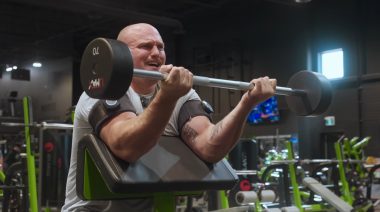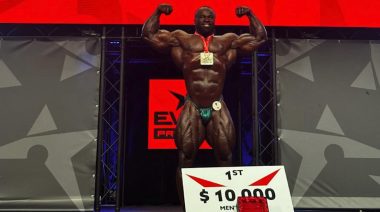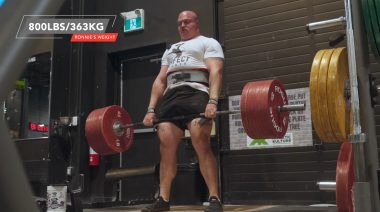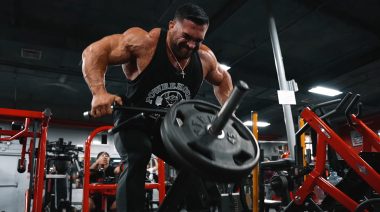Bodybuilders have long been ridiculed within the CrossFit community by those who seem to believe they train better, harder, and more effectively than their muscle-bound counterparts. To those who are a part of this – stop throwing stones for a minute and sit down on the shore to contemplate why you disagree with everything that bodybuilders do and are about.
Because it’s cool to? I hope not. Because you don’t really understand that world? Not understanding everything about the mindset or methodology of a sport is no reason to dismiss it. (If it was, you wouldn’t be doing much Olympic weightlifting.) I’m going to guess it’s because you have been told that training separate body parts is incorrect, that isolation exercises are an ineffective use of time, and that bodybuilding nutritional practices are irrelevant to you.
Most CrossFitters I know are up for learning across many different disciplines. So why the disrespect towards bodybuilders? Perhaps because with powerlifting, strongman, or even mobility it’s easy to see how they slot in. It’s not as obvious to you how bodybuilding can positively impact your training. If so, you need to dig a little deeper. Just because there isn’t a cert for it doesn’t mean it’s irrelevant to CrossFit, or more importantly, to you.
Here are four bodybuilding lessons I’ve learned and implemented over the years:
Lesson #1: Nutrition
If you really want to nail those body composition targets, and be able to replicate your achievements, then treat your nutrition like you (should) do your training – record and measure religiously.
I’m a firm believer in immersing yourself in worlds that are different to your own for weeks, months, or even years – then taking lessons learnt back to your core domain. I did just that with bodybuilding-based nutrition. I found myself a well-respected nutritionist, and immersed myself in bodybuilding nutrition for years – that means reading, sleeping, and of course eating it. I learnt to how to add mass properly, and strip it off effectively (+/- 12kg from where I am now.) I’ve been on plans where I need to eat less than 4g of carbs in some meals, and less than 4g of fat in the others.
I weighed and measured every meal to the gram for years. It’s not that hard. A heavy 20-rep squat set is hard. So when I hear folks whine about how weighing and measuring on paleo is too much to cope with, then I don’t want to hear it when you don’t gain weight/lose weight/fulfil your objectives.
Or even worse, listening to people moan that two weeks of weighing and measuring on The Zone, just to get an idea of what four ounces of chicken actually looks like, is too tough. Seriously – nut up or shut up.
Lesson #2: Discipline
Respect the discipline it takes to reach that level of body composition and use that discipline to be a better lifter and person. If you don’t feel the respect for this, you probably need some more discipline yourself.
There’s a wider picture here. There is no denying that bodybuilders get themselves into incredible shape for a contest. That kind of shape doesn’t happen through luck or simply good genetics. It’s the result of knowledge, mixed with unwavering application, smothered in a good dose of discipline.
It doesn’t matter if going on stage and showing it all off is not your idea of enjoyment. It’s not mine either, but that doesn’t stop me from marvelling at the physiques of those who have worked hard for it and have the balls to do it. So don’t go throwing stones until you can show me that you’ve given that level of commitment, dedication, and downright discipline to, well, anything, actually.
Lesson #3: The Bench Press
The bench is a functional movement. It is also an incredible strength and mass builder. Use it.
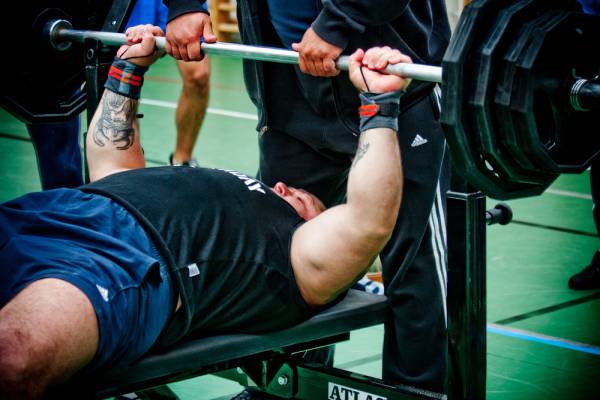 Something else I hear all the time that winds me up is that the bench isn’t functional. The bench came to the forefront in the 1940s and 1950s through the results the bodybuilders of the time were getting from it. It has remained a favorite exercise for bodybuilders, who will often perform numerous variations of the movement.
Something else I hear all the time that winds me up is that the bench isn’t functional. The bench came to the forefront in the 1940s and 1950s through the results the bodybuilders of the time were getting from it. It has remained a favorite exercise for bodybuilders, who will often perform numerous variations of the movement.
If you’re going to tell me the bench press is not functional, you’d better have a damn good explanation as to why. If your training is geared towards being better at life, and being able to deal with emergency situations, then being trapped under something, or someone, is one of those situations.
In fact, whilst discussing this very thing with one of my clients, he told me of a time he found himself overboard and trapped under a boat, wedged between the sea bed and the boat itself. To get himself out, he horizontally-pressed the boat off his body. Try telling him the bench press isn’t functional. Actually, you’d better not – he is now a competing strongman, and would probably bench you.
Lesson #4: The Bicep Curl
Isolation movements are not evil and can help with prehab and rehab. Use isolation exercises, such as the bicep curl, to complement your compound training movements and fill in the gaps.
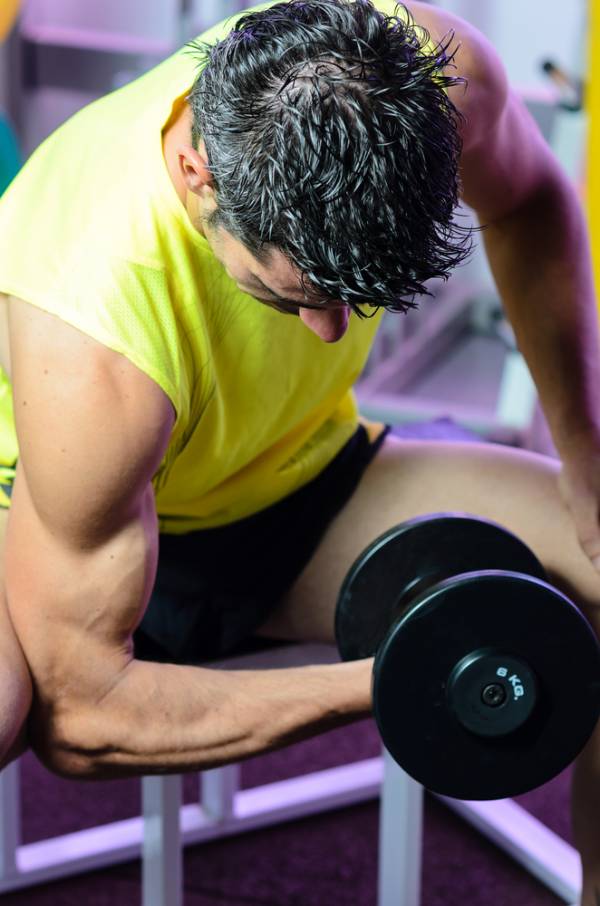 Another movement that is ridiculed by many of those who train CrossFit or other functional approaches is the bicep curl. I’ve spoken with many about this, and when I ask why they are so vehemently against the bicep curl, their answer centers around the concept that the bicep curl is an isolation exercise, and isolation exercises are evil, wrong, and should never be touched. Some say that the bicep curl is not functional. Strangely then, for such a polarized opinion, when I ask their definition of functional fitness, their answers are delivered with much less conviction.
Another movement that is ridiculed by many of those who train CrossFit or other functional approaches is the bicep curl. I’ve spoken with many about this, and when I ask why they are so vehemently against the bicep curl, their answer centers around the concept that the bicep curl is an isolation exercise, and isolation exercises are evil, wrong, and should never be touched. Some say that the bicep curl is not functional. Strangely then, for such a polarized opinion, when I ask their definition of functional fitness, their answers are delivered with much less conviction.
For me, functional fitness is fitness to perform a function – to do a certain task or job, or even train for a certain sport. Therefore, if bicep curls help you to perform this function, they are functional.
Strongmen and powerlifters are a case in hand (incidentally, aspects of both are included in many peoples “functional training”). Bicep strength can be very beneficial to a strongman, from direct involvement in an event such as an arm-over-arm truck pull to the awkward positional demands of movements like the tire flip. Bicep curls also afford elbow protection, not least through strengthening of the tendons – something that is also of interest to powerlifters, who are constantly putting stress through the elbow via the bench press. For athletes who include a reasonable amount of these movements in their programming, the bicep curl is not just recommended, but is necessary to be as fit as possible for the task at hand, and to stay away from injury.
Isolation work can also be relevant when bringing up a weak link in the body, and can be used to help rehab and fix post-injury muscle imbalances. I am not saying fill your workouts, and your time, with isolation movements. Without a doubt, compound movements give you the most bang for your buck and should form the majority of your training, for the sake of completeness, efficiency, and yes, functionality. However, dismissing bicep curls, or any isolation exercise for that matter, on a matter of principle without looking at if it serves any functional purpose for you is short-sighted to say the least.
Look at the way many world-class strongmen train – some of the most powerful men in the world split up their week into bodybuilder-type splits, including both compound and isolation movements. This is complemented with one event day. I’m not sure they can be going too far wrong – you only need to watch a single strongman competition to see that these guys are the epitome of functional strength.
 There are some bodybuilders who give the sport a bad name through their actions. And there are certainly some facets of bodybuilding that you would be wise to steer clean from. But that is true of any sport, and is no excuse for the fact that bodybuilders continue to be ridiculed by those who are not in any position to do so.
There are some bodybuilders who give the sport a bad name through their actions. And there are certainly some facets of bodybuilding that you would be wise to steer clean from. But that is true of any sport, and is no excuse for the fact that bodybuilders continue to be ridiculed by those who are not in any position to do so.
Alongside the learnings offered on nutrition, discipline, isolation movements, and body part splits as discussed above, the deeper you dig, the deeper you will realize our bodybuilding brothers have yet more to offer us. This includes insights on time under tension, work ethic, cutting weight for competition, and even an understanding of what it feels like to be part of an anti-establishment counterculture.
Work out what elements of bodybuilding you can learn and benefit from, and include them in your training. Be confident in your reasons, and ignore those who are too ignorant to learn for themselves.
Photos courtesy of Shutterstock.

